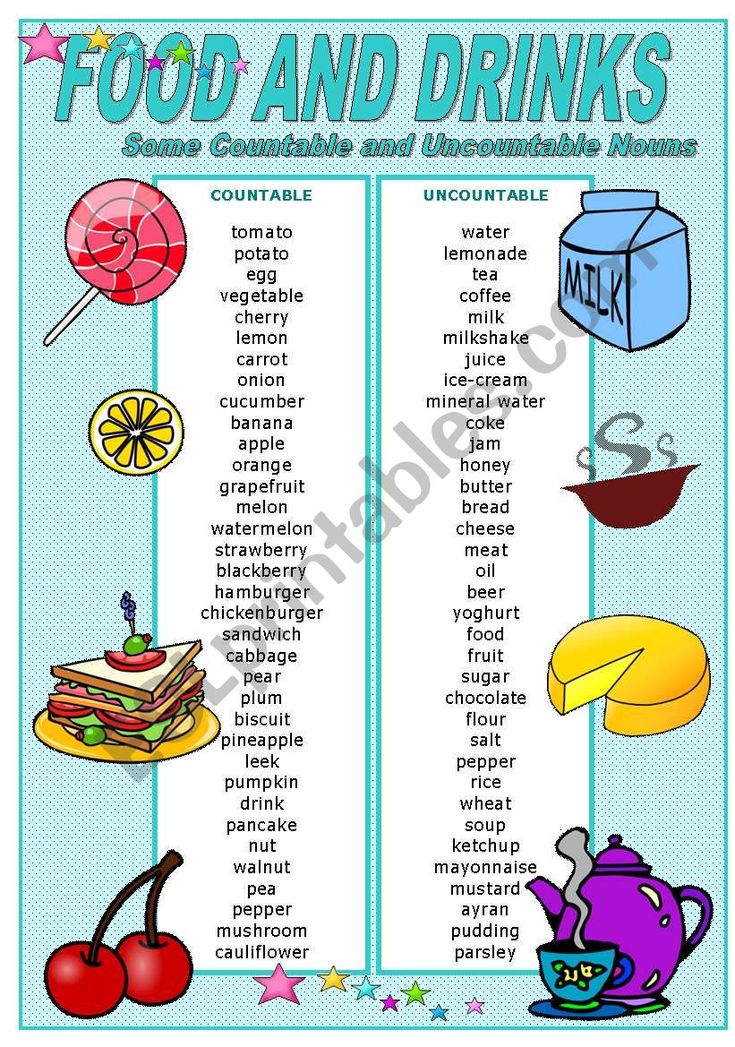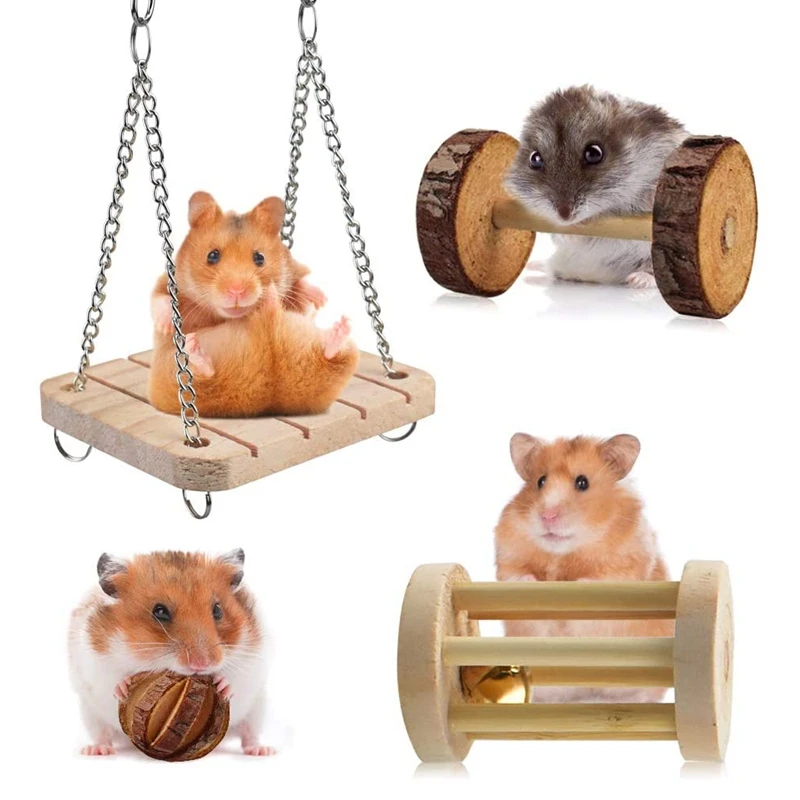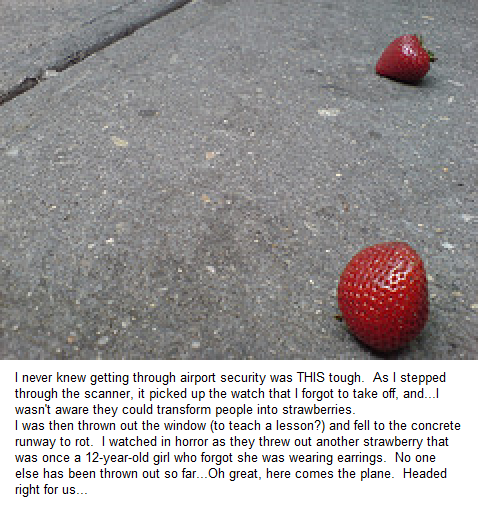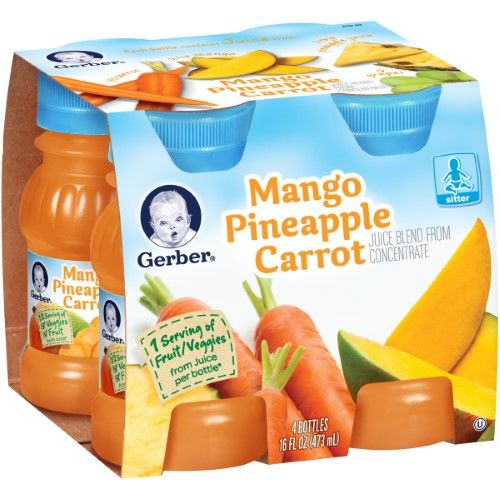Bulk baby food recipes
3 simple, iron-rich baby food recipes you can cook and freeze in bulk
Preparing nutritious food for the whole family every day is no easy task, especially when the newest member is just starting their journey into the wonderful (and messy!) world of solids. Introducing solids is a big adjustment for everyone involved; often it means tweaking the menu and culling salt from recipes, that baby food equipment overtakes a significant part of the kitchen, and that suddenly there’s a lot more cleanup to contend with (i.e. dishes, bench top, high chair, floor and often, both baby and whoever’s feeding them need a wipe down by the end of the meal!).
Because we’re living with my in-laws and I don’t want to force mum and dad to eat the salt-free and preservative-free diet that would be best for Mr Z, I prepare his food separately. I’m actually hoping that in a couple of months, we can do away with purees altogether and get into a more “baby-led weaning” style of feeding, but I’m conscious of how much mess that whole process involves and I really don’t want my in-laws to have their kitchen completely overrun by their grandson (we’ve already overtaken most of the house… 😔)
Making and freezing baby food in advance
To make things a bit easier, I decided to pre-make Mr Z’s food and freeze them in ready-to-heat portions.
I used to have a few books that had awesome baby food recipes but those are in storage, so I just conjured up these three recipes for beef casserole; bolognese; and potato, leek and chicken soup; trying my best to include a good mix of iron-rich protein, veggies, and carbs into each meal. They’re easy to blend to a smooth, puree-like consistency (I do it in batches with our hand-blender). Obviously as baby gets older, you can just mash them with fork or don’t have to blend them for as long, so you can introduce lumps and encourage them to learn to chew.
I make these “baby friendly” recipes on a weekend afternoon or weekday evening, freeze them in Weinmeister freezer pods, then transfer them into labelled sandwich bags so they take up less space in the freezer. Each pod holds about 75ml (2.5 fl oz) of pureed food – just enough for a 7 month old bub’s main meal. If I make all 3 recipes using the portions below, I have about a month’s worth of food made in advance.
These recipes are great bases – your bub can eat them as they are, or you can mix up flavours and textures by adding rice, cereal, breastmilk, yoghurt, cheese, herbs, spices, or another type of vegetable puree as you go.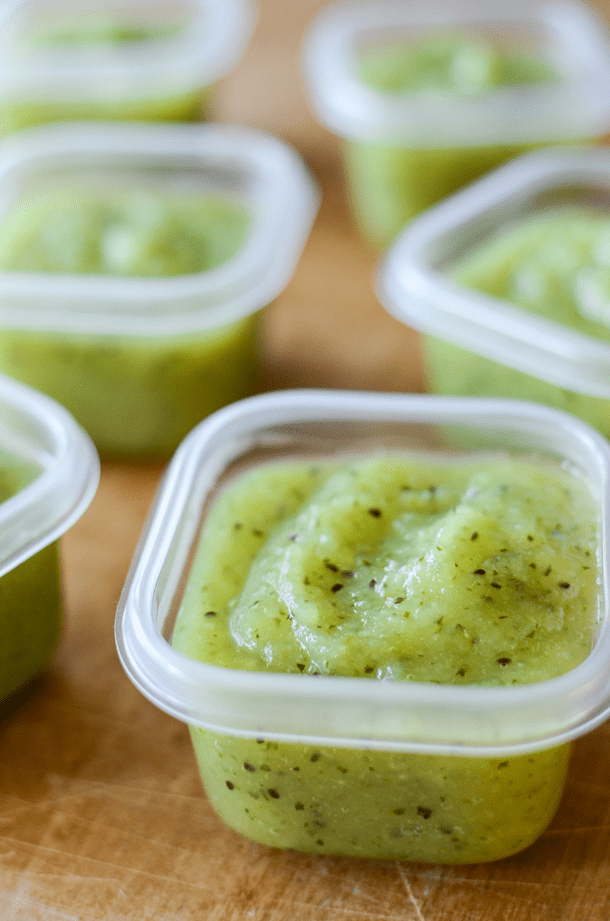
I am a big fan of introducing bub to flavours we would eat on a regular basis, especially the savoury stuff and a wide variety of vegetables. I limit how much sweet fruit and root veggies we give him so he doesn’t get accustomed to eating only sweet food. Baby’s appetite changes every day and at different times of day – sometimes he’ll have one pod or two, or he’s content a piece of fruit (e.g. a banana or half an avocado) or I’ll mix fruit puree with yoghurt and that’s enough.
If you have any favourite baby food recipes you’d like to share, hit me up on Facebook or Instagram, or leave a comment below.
Baby-friendly beef and quinoa casserole
A sweet, iron-rich beef casserole that is great for baby and the whole family.
Print Recipe Pin RecipePrep Time 10 mins
Cook Time 1 hr 20 mins
Servings 24 75ml pods
- 1 tbsp oil (coconut or canola oil is fine)
- 1 brown onion, sliced
- 3 cloves garlic, chopped finely
- 500 g diced beef (chuck steak is great, or just get the pre-cut beef pieces from the butcher)
- Half butternut pumpkin, diced
- 4 potatoes, diced
- 4 carrots, diced
- 1 cup quinoa, rinsed
- 1 litre water or salt-free beef stock
- 2 handfuls baby spinach, rinsed
Heat the oil in a large pot at medium heat
When the oil is hot, sauté the onions
Add beef pieces and garlic, stir fry until brown
Add pumpkin, potatoes and carrot, stirring for about 3-5 minutes
Add quinoa and the water/beef stock, and bring to boil
Once boiling, lower the heat and put the cover on, allowing the stew to simmer until quinoa absorbs most of the liquid (I leave it to simmer for about 45 minutes – 1 hour, checking it every 15 minutes or so to ensure the bottom isn't burning)
Once the quinoa has absorbed the liquid and the meat is tender, stir in the spinach.
 Put the cover of the pot on, and turn off the heat
Put the cover of the pot on, and turn off the heatWait for it to cool, then mash or puree to desired consistency and freeze in 75ml portions
Add greek yoghurt, cheese, capsicum, zucchini, or tomatoes to change up the flavour or texture when serving
Baby Bolognese
This pasta recipe is a great source of iron and vitamins from all the veggies. When bub is ready for finger foods, save some of the cooked pasta so they can practice holding it (without the sauce!) and feeding themselves.
Print Recipe Pin RecipePrep Time 10 mins
Cook Time 45 mins
Servings 24 75ml pods
- 1 tbsp oil (coconut oil or canola is great)
- 1 brown onion, diced
- 4 cloves garlic, diced
- 2 stalks celery, diced
- 4 tomatoes, diced
- 1 carrot, diced
- Half head of brocolli, diced (make sure to use the stalks too!)
- 500 g beef mince
- 2 tbs salt-free tomato paste OR you can use 500g of salt-free passata
- 1 tbsp paprika (this is optional – you make and freeze the base recipe and add seasoning later when bub is ready to eat a defrosted pod)
- 250 g pasta of your choice
Heat the oil in a large pot
Sauté the onions on medium heat
Add mince and garlic, and brown (if you are going to add seasoning, do so before the meat browns)
Mix in celery and cook for a few minutes, until celery starts to pale
Add the tomatoes and tomato paste (or passata), stir until well mixed
Add carrots and broccoli and bring the sauce to boil
Once boiling, lower the heat and simmer the sauce for approx 20-30 minutes, until it thickens
Prepare pasta as per the packet instructions
Mix pasta with sauce
Wait for it to cool, then mash or puree to desired consistency and freeze in 75ml portions
Add cheese, breastmilk or formula, capsicum or dried herbs when serving to change up the flavours
Leek, Vegetable and Chicken Soup
Print Recipe Pin RecipePrep Time 15 mins
Cook Time 40 mins
Servings 22 75ml pods
- 1 tbs oil (coconut or canola oil is great)
- 1/2 leek, sliced thinly
- 3-4 cloves garlic
- 500 g chicken in small pieces (I use breast if I'm going to puree it straight away, but anything with bones makes more flavoursome so you only need to add water instead of stock)
- 4 potatoes, diced
- 1/2 butternut pumpkin, diced
- 1 head of broccoli, cut
- 1 litre water or salt-free chicken stock
Heat oil in a large pot, on medium heat
Sauté the leeks until translucent (2-3 minutes)
Add garlic and diced chicken – cook until chicken is brown
Stir in potatoes and pumpkin
Add water/chicken stock and bring to boil
Simmer for 15-20 minutes
Stir in broccoli and cover for another 5 minutes
Allow to cool, then mash/puree until desired consistency is reached and freeze in 75-150ml portions (I find my 8 month old will easily eat 2 x 75ml pods)
Add rice cereal, barley or other pureed veggies to bulk up the soup
A note about re-heating frozen baby food
The upside of pre-cooking baby food in batches is that there is always something ready to pop into a bowl whenever Mr Z needs something to eat. When time permits, I’ll defrost the pod in the refrigerator and then heat it by placing the entire container in a jug or bowl of hot water. But when I’m in a rush (which is usually), I’ll heat one pod in a microwave-safe dish or bowl for about 1 minute and 15 seconds. If you’re going to use a microwave, always test the food temperature yourself before you give it to your baby. Stir the food thoroughly to avoid heat spots. We use the Munchkin brand baby spoons (pictured), which turn white if the food is too hot.
When time permits, I’ll defrost the pod in the refrigerator and then heat it by placing the entire container in a jug or bowl of hot water. But when I’m in a rush (which is usually), I’ll heat one pod in a microwave-safe dish or bowl for about 1 minute and 15 seconds. If you’re going to use a microwave, always test the food temperature yourself before you give it to your baby. Stir the food thoroughly to avoid heat spots. We use the Munchkin brand baby spoons (pictured), which turn white if the food is too hot.
Hope you enjoy these recipes (if you like them, please share this page, or pin it using the graphic below), and if you have any favourites you think I should try with Mr Z, send them to me!
xo Joy
Easy Homemade Baby Food Recipes & Tips For Starting Solids
10.6K shares
- Facebook222
- Twitter187
This post may contain affiliate links. Read the full disclosure
Starting solids is an exciting milestone for babies and parents, however, it can also be daunting not knowing where to start or what foods are suitable. Knowing you are feeding your baby all the good stuff is important too, ensuring you are providing wholesome baby food to give them the best start in life.
Knowing you are feeding your baby all the good stuff is important too, ensuring you are providing wholesome baby food to give them the best start in life.
These homemade baby food recipes will get you off to a great start with starting solids along with tips on introducing solids to your baby.
Table of Contents
HOME COOKED BABY FOOD RECIPES
When starting solids, you have the choice of using pre-made baby food products, homemade baby food purees, or a combination of the two.
Back when I was a first-time mum, making my own homemade baby food recipes seemed like the perfect solution, both for cost-effectiveness and to ensure my baby was getting all-natural ingredients without any nasty preservatives or added sugars.
We simply needed some home-cooked baby recipes to get us started.
This was quick and easy, and we were able to freeze bulk lots of baby food in advance, which was also a great way to simplify life.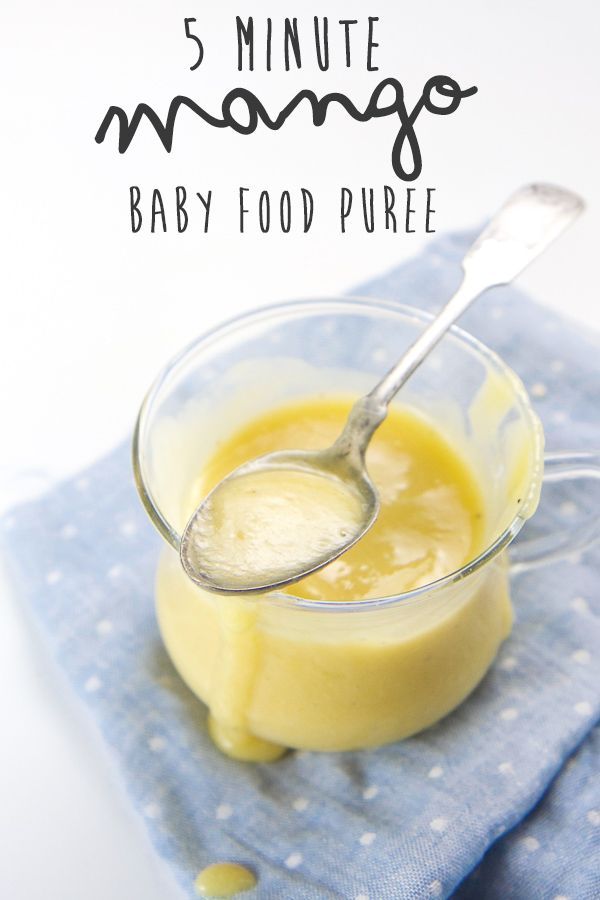
After all, we are big fans of freezer cooking in this household.
Fast forward 5 years and we have done the majority homemade baby food purees for both of our two girls when first starting solids, but with the occasional convenience of a premade pouch or jar when travelling or out and about.
To give you the easiest start with your own baby feeding solutions, here are some of my favourite baby food purees:
How To Make Your Own Baby Food At Home
To create your own homemade baby food at home, you will need a blender or food processor and a way of steaming vegetables before you puree them.
We typically use a stove-top steamer which takes about 10-15 minutes depending on the vegetable, and a Baby Bullet blender when we are making our baby food at home.
The Baby Bullet is super fast and it comes with the perfect size food pots and containers for different batches.
Initially, most of what we made were Baby Bullet recipes that came with the blender recipe book, until we decided to experiment with a few interesting baby food recipes of our own.
If you are planning to make up bulk lots of food and freeze them, you may also want some extra freezer-safe baby food containers.
These Mumi&Bubi storage containers were what we used and they worked perfectly for serving sizes. They almost look like giant ice cube trays, which would also work.
Or get silicone baby food containers, similar to the ones you get with the Baby Bullet.
You can freeze in batches then just pop out the servings you need to defrost and serve to bub.
How To Introduce Your Baby To Solid Food
There can be the frustration of getting more food on you or the floor, during those early days of introducing solids.
You start to wonder if your baby is getting enough nourishment when hardly anything seems to end up in their mouth, while you battle a clenched jaw and crying.
And the big one – wanting to ensure your baby is getting a wide range of age-appropriate first foods in their new expanding diet, prepared in a way that maximises the good stuff, with a variety of healthy foods. That’s a lot of pressure!
That’s a lot of pressure!
We started off giving our daughters baby rice cereal mixed with fresh breast milk initially as their first attempt at solids but there isn’t anything blander. It is a good starting point though, as the breast milk with the cereal keeps it somewhat familiar as you start to add texture, with the thin consistency, making it gradually thicker.
There is plenty you can do as a parent or caregiver to help transition your baby to solid food in a positive manner. Check out the tips below:
When to Start Solids
Your baby should be around 6 months old when starting solids.
Before this time your baby will get all the nutrients they need from breastmilk or infant formula.
Prior to this time, your baby’s digestive system is not yet prepared for solid baby food.
Signs your baby may be ready to start solids are when:
- They begin to show interest in the food you are eating
- They seem to still be hungry after a normal feed of breast milk or formula
- They start putting everything in their mouth.

They will also be able to hold their head up on their own and can sit with support, and will show a reduction in the tongue thrust reflex of pushing everything out of the mouth.
Frequency of Solids
When first starting solids, one meal a day is adequate for babies around the 6 month stage until they begin to show more interest and eat larger amounts.
Between 6 to 8 months, increase your baby’s meals to 2-3 per day.
Between 9 to 12 months, increase your baby’s meals to 3 per day, with snacks in between.
What Should You Be Feeding Your Baby?
When it comes to providing your baby with appropriate first food, you can make baby food at home with a blender or food processor, ensuring the food is pureed completely, with no lumps.
This is especially important early on.
As your baby gets older, the food can have a thicker, coarser texture.
Refer to your local health professional or government website for a list of recommended first foods and those to be avoided.
For example, you may wonder if your baby can have meat as part of their diet.
Generally, meat can be a good source of nutrients and vitamins, which can help boost brain development and strengthen the immune system. However, meat can be coarser than other baby foods, which is why it’s important to consider different ways how to prepare them, depending on their age. So, if you’re only introducing solid food to your baby, a variety of meat purees from Serenity Kids and other similar providers may be an excellent option.
Tips For Starting Babies On Solids
When your baby is ready to start eating solids, it can be a little daunting. What should you give them? How much should you give them? Will they like it?
Here are a few tips to get you started:
- Start with simple foods. Pureed fruits and veggies are a good place to start.
- Consider texture when introducing solid foods. It’s important to provide your baby with food with new texture as it can help them learn how to chew and their jaws and teeth to develop.
 Because of this, you should choose solid foods with good texture. For instance, you can begin with pureed foods and then serve them with mashed foods once they are ready for greater diversity. Over time, you can move on to chopped and minced foods. In doing so, your baby will be able to eat a wide variety of healthy foods.
Because of this, you should choose solid foods with good texture. For instance, you can begin with pureed foods and then serve them with mashed foods once they are ready for greater diversity. Over time, you can move on to chopped and minced foods. In doing so, your baby will be able to eat a wide variety of healthy foods. - Introduce new foods slowly. Start with one new food at a time and wait a few days in between to make sure your baby doesn’t have any allergic reactions.
- Don’t worry if they don’t eat much at first. Babies are small and their stomachs are even smaller. They don’t need much food to start with
- Be prepared for some mess. It’s inevitable that some food is going to end up on the floor, or your clothes, or in their hair. Just roll with it and know that it’s all part of the process. Besides, it’s just natural for your baby to eat using their hands or fingers. Hence, expect the mess as they learn to eat solid foods.
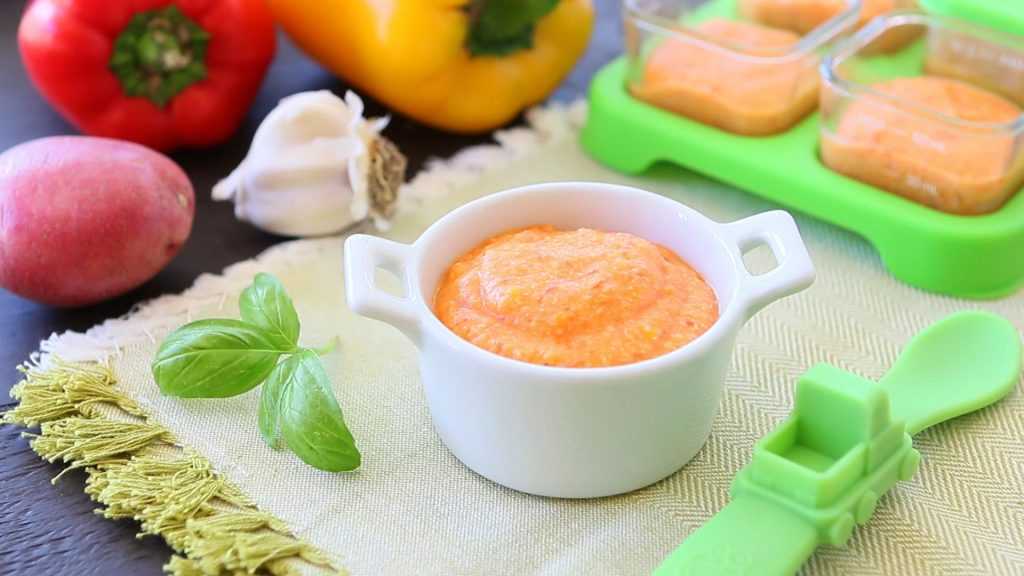 Their mealtime will become less messy as time goes by.
Their mealtime will become less messy as time goes by. - Don’t get discouraged if your baby doesn’t like a particular food. It can take a few tries for them to get used to the taste and texture of new foods. And especially getting used to the texture of solid food in the first place.
- Be wary of choking hazards: You should always watch your baby when they’re eating. They have a small windpipe which makes it easy for them to choke. To avoid this, make sure to sit your baby up while eating, slice food into small pieces and mash hard fruits finely. Be aware of some solid foods that might cause choking, such as popcorn, nuts, seeds, and oval foods, like berries and grapes so these should be avoided until your baby is older.
- Have fun with it! Getting your baby to try new foods can be a challenge, but it can also be a lot of fun. Be creative and explore different flavours and textures with them.
BABY FOOD RECIPES FOR 4-6 MONTH-OLDS
These first few baby puree recipes are perfect for those early days when you are just starting your baby on solids and they seem ready to roll.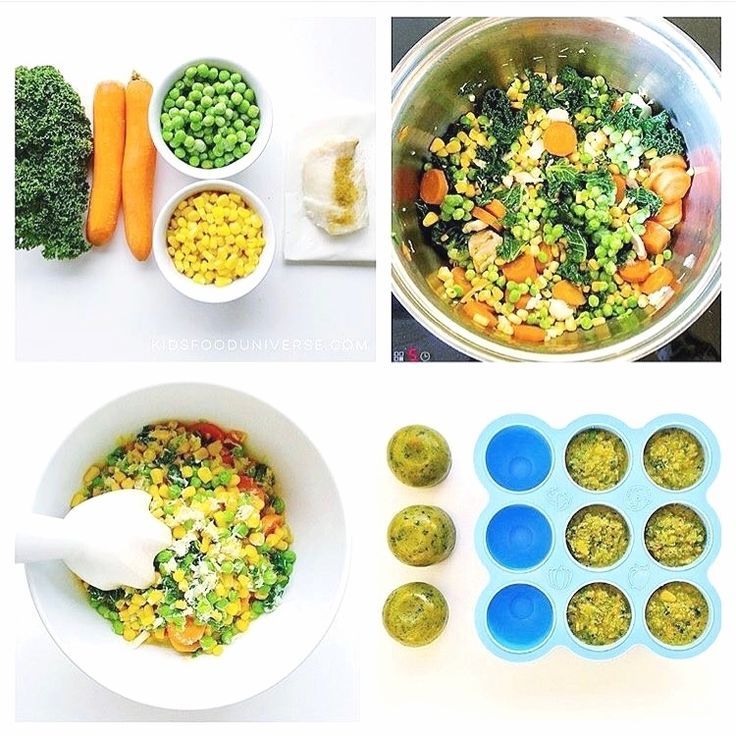
Usually, this occurs between 4 to 6 months, but fine to continue beyond this stage as you introduce more foods.
These are good flavours to start with your baby food recipes 4 months and beyond.
For each of these recipes, simply add ingredients to a blender or food processor and puree to desired consistency.
Banana and Avocado Puree
- 1 whole banana
- 1 peeled and pitted avocado
- 80ml water
Banana and Kiwi Fruit Puree
- 1 whole banana
- 1 peeled kiwi fruit.
- 80ml water
Sweet Potato and Apple Puree
- 1 medium apple
- 1 medium sweet potato
- 250ml water
Boil or steam both potato and apple until very soft. Puree until smooth.
Squash and Carrot Puree
- 1 yellow squash
- 1 peeled carrot
- 80ml water
Boil or steam carrot and squash until soft. Add to blender/processor and puree to desired consistency.
Brown Rice, Banana and Kiwi Fruit Puree
- 1/2 cup brown rice
- 1 whole banana
- 1 whole kiwi fruit, peeled
Add rice to a food processor and mill to a fine powder. Add rice powder to a pot of water and cover until it boils. Turn down the heat and cook for a further 20 minutes.
Once cooled, add cooked rice to the blender with banana and kiwi fruit and puree to desired consistency.
Zucchini and Pear Puree
- 1 zucchini
- 1 pear, peeled and cored
- 80 ml water
Steam or boil zucchini and pear until soft. Add to blender/processor and puree to desired consistency.
Broccoli and Watermelon Puree
- 1/3 head broccoli
- 1 cup watermelon, seeds removed
Steam/boil broccoli until soft. Add broccoli and watermelon to bender/processor and puree to desired consistency.
BABY FOOD RECIPES FOR 6-10 MONTH OLDS
These next few baby puree recipes are for once your baby has adapted to their early basic solids and you can start introducing more interesting flavours and textures.
Depending on your baby’s preferences, you can puree these combos for shorter periods to create soft chunks and thicker textures.
At this age, you will also want to have some more interesting baby food recipes to keep their tastes growing too.
Pear and Oats Puree
- 1 pear, peeled and cored
- 1/2 cup of whole oats
Run oats through a food processor to mill into a finer texture. Add to a pot of water and boil, then turn down and cook for a further 20 minutes. Steam pear until soft.
Add oats and pear to blender/processor and puree to desired consistency.
Chicken, Brown Rice and Carrot Puree
- 1/ cup brown rice, cooked
- 1 carrot, steamed
- 1/2 cup diced or shredded cooked chicken breast
- 1/4 cup water
Add cooked/steamed ingredients to blender with the water and puree to desired consistency.
Turkey, Chickpea and Sweet Potato Puree
- 1/2 cup diced or shredded cooked turkey breast
- 1/2 cup chickpeas
- 1 medium sweet potato, steamed
Add ingredients to blender/processor and puree to desired consistency.
Cauliflower, Blueberry and Quinoa Puree
- 1/2 cup blueberries
- 1/3 head cauliflower, steamed
- 1/2 cup quinoa, cooked
Pre-cook quinoa and steam cauliflower until soft. Add both to blender or food processor with berries and puree to desired consistency.
Lamb, pumpkin and Rosemary Puree
- 1 cup cooked lamb
- 1/2 cup steamed pumpkin
- 5 rosemary leaves
Add all ingredients to a blender/food processor and puree to desired consistency.
Great Foods To Include In Baby Purees
Some of these great foods can be easily incorporated into your homemade baby food recipes.
Mix and match flavours that complement each other or add the natural sweetness of fruit flavours to a bland vegetable flavour to create delicious mixes that will help your baby explore their taste buds.
- Carrots
- Sweet potatoes
- Pumpkin
- Zucchini
- Butternut squash
- Peas
- Mango
- Pear
- Banana
- Avocado
- Apples
- Cherries
- Kiwi
- Green beans
- Broccoli
- Spinach
- Chickpeas
- Brown rice
- Quinoa
- Chicken
- Turkey
- Salmon
- Beef
- Lamb
- Oatmeal
- Rice cereal
- Strawberries
- Blueberries
- Raspberries
- Rice cereal
Tips For Getting Started With Making Homemade Baby Purees
Here are some tips for simplifying your process of making your own purees and food combinations for your baby:
- Start by introducing foods separately first to make sure there are no allergic reactions
- After this, you can start creating some flavour combos with different baby food ideas
- If purees are too thick, add more water to get to the desired texture.

- Set aside some of the foods you are cooking for the rest of the family for use in baby meals to save time
- Store baby food in the refrigerator for use within 2 days
- Store in baby food containers in the freezer and defrost ready for use at a later time
- As your baby gets older and more adventurous with flavours, you can add multiple ingredients or other spices for extra flavour.
- Once your baby is older, baby lead weaning allows you to introduce more varieties of solids and textures similar to the foods the rest of the family is eating.
Pre-Made Baby Food: No Time For Homemade
While making homemade baby food is a wonderful option for meals at home, sometimes you do find yourself time-poor and running low on frozen portions.
Or perhaps you are out and about for long periods and don’t want to worry about the inconvenience of keeping your homemade baby food refrigerated until you need it.
Just like breastfeeding or bottle-feeding your baby, you have options.
This is where pre-made baby food is actually a great option.
Ditch the mum guilt! Not everything needs to be a homemade puree!
There is no reason why you can’t give your baby a mix of food you make and food you buy.
Just make sure you have a close look at what is going into the foods you are purchasing so you know your baby is still getting great quality ingredients and a variety of nutrients into their diet.
However in saying that, here in Australia it is quite strict what is available to purchase in our supermarkets which is a reassuring thing as a new parent, as that baby food aisle can be overwhelming!!
Once you do get into the swing of things with making your own purees, you might like to dig into the next step and start freezer cooking for the whole family! Who says you just need to freeze baby food?
This is one of our biggest time savers, especially back when we had a shift-working dad in the household!
Bulk freezer cooking means meal prep is done and time is free to spend instead focused on your little ones and their needs!
Ready for the next phase of introducing solids? Try these recipes for baby-led weaning:
- Healthy muffins for kids
- Afternoon snacks for kids
- Mango, banana, yogurt muffins
- Carrot, ham, cheese muffins
- Applesauce, banana and oat muffins
SEE ALSO:
- Sibling gifts to reduce new baby jealousy
- How to stay comfortable during a summer pregnancy
- Ways to make life easier with a newborn
- Lunch box recipes for school and daycare
- Printable lunch box ideas
- Baby essentials for the first 3 months
- Gifts for newborns
- Baby gender reveal party ideas
- Creative pregnancy announcement ideas
- Gifts for new mothers
- Books about becoming a big sister or brother
10.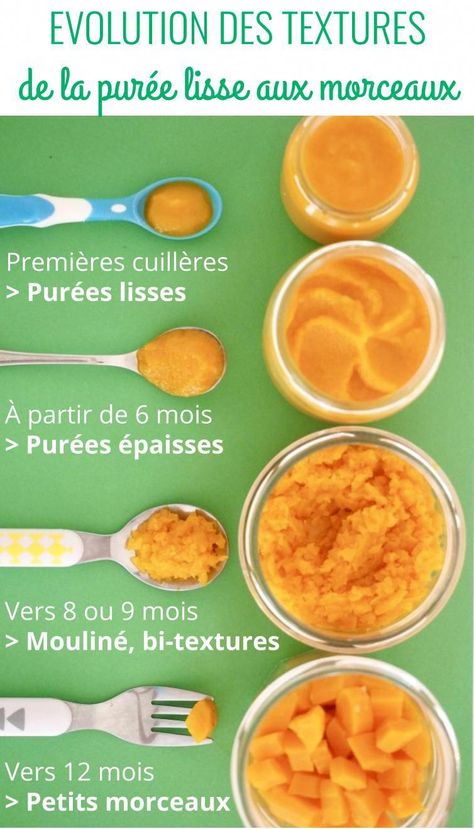 6K shares
6K shares
- Facebook222
- Twitter187
Add recipher
Rate all
baby food
Filters
Rate all
Selection
Recipes of the day 9000
Proper nutrition (pp-recipes)
Ingredients
Users
Show
show
115
Recipes
Slosia steaks with Fettuchin “Fish”
Maguro
Advertising
Recipe from Julia Vysotskaya
Eggs in a water bath
,Eggs must be fresh. If your child likes eggs in a bag, you need to keep them in the oven for no more than five minutes, and if, on the contrary, he does not like liquid ones, tighten the pots or molds
Yulia Vysotskaya
Yulia Vysotskaya's recipe
Cottage cheese and fruit dessert with bread
Dessert can be decorated with apple slices, and for older children and adults - with whipped cream.
Yulia Vysotskaya
Recipe from Yulia Vysotskaya
Semolina porridge with fresh pear
You can not beat the pear, but cut it smaller and add it to the porridge. This recipe also goes well with apricots and applesauce with cinnamon. nine0003
Yulia Vysotskaya
Recipe from Yulia Vysotskaya
Chicken puree soup with potatoes and celery
This soup is good on its own, but it will be even tastier if you add it to my sauce .
Yulia Vysotskaya
Recipe from Yulia Vysotskaya
Curd cakes with carrots
It was such an unexpected impromptu, my children really liked it! If your cottage cheese is wet, it is better to put not the whole egg, but only the yolk. nine0003
Yulia Vysotskaya
Recipe from Yulia Vysotskaya
Zucchini and Green Pea Soup for Children
If you increase the amount of ingredients and add some "adult" seasonings, you get a wonderful soup!
Julia Vysotskaya
Advertisement
Advertisement
Recipe from Julia Vysotskaya
Children's green pea soup
It is better to use shallots in this soup, so as not to interrupt the delicate and sweet taste of peas. Instead of yogurt, low-fat sour cream is suitable.
Yulia Vysotskaya
Recipe from Yulia Vysotskaya
Couscous for children
Couscous is a completely underestimated thing. We feed children with semolina, but couscous is most often the same durum wheat. To make it not sticky, but lush, I usually do not just give it
Yulia Vysotskaya
Recipe from Yulia Vysotskaya
Broccoli soup
Instead of pumpkin, sweet potato will do. For older children, this soup can be served with sour cream or cream, and make croutons: spread slices of bread with butter, sprinkle with grated cheese and quickly under the grill!
Yulia Vysotskaya
Recipe from Yulia Vysotskaya
My Pistu (fennel and apple sauce)
In general, Pisto sauce is a sauce without herbs, it is prepared in Nice. It is good for children to offer a slightly modified version of this sauce, which can be seasoned with pasta, or can be added to
It is good for children to offer a slightly modified version of this sauce, which can be seasoned with pasta, or can be added to
Yulia Vysotskaya
Recipe from Yulia Vysotskaya
for older children, bean puree can be combined with mashed potatoes without completely mixing them - it will be very beautiful. If the child refuses to eat basil, replace it
Yulia Vysotskaya
Recipe from Yulia Vysotskaya
Cauliflower, red pepper and corn trio
Children love the bright colors and sweet taste of these vegetables. Corn is suitable both fresh and frozen, the main thing - be sure to pass it through a sieve after whipping!
Yulia Vysotskaya
Recipe from Yulia Vysotskaya
Baked garlic
This is not my invention, this garlic is made in Thailand in a detox clinic. Ready, it is cut lengthwise and served instead of butter with grain bread - it is so tasty, unusual, and easy, and healthy. You can
Ready, it is cut lengthwise and served instead of butter with grain bread - it is so tasty, unusual, and easy, and healthy. You can
Yulia Vysotskaya
Recipe from Yulia Vysotskaya
Vegetables in cheese sauce
Russian type of cheese is suitable. At home, everyone loves cheese very much - both just like that and added to different dishes. It seems to me that cheese sauce will save any, even very fresh vegetables! nine0003
Julia Vysotskaya
Advertisement
Advertisement
Recipe from Julia Vysotskaya
Puree from white beans and veal excellent thing9004; if you boil it, beat it into a puree and add a little horseradish, a little garlic and vegetable oil, you get a wonderful sauce for adults, which can be served with
Yulia Vysotskaya
Recipe from Yulia Vysotskaya
Green fingers
Beans are especially delicious with this tomato sauce. It is better to take semi-hard cheese - Dutch, Swiss or Russian.
Yulia Vysotskaya
Recipe from Yulia Vysotskaya
Sweet vegetable puree
Children tend to like vegetables such as young sweet peas or young corn. But after they are whipped in a blender, they must be passed through a sieve, because the pea shell and
Yulia Vysotskaya
Recipe from Yulia Vysotskaya
Carrot and chickpea puree
. Such a puree is good not only for children - you can make something like
Yulia Vysotskaya
Yulia Vysotskaya
Recipe from Yulia Vysotskaya
Lentils with vegetables for children
Lentils contain a lot of iron, which is necessary for the proper development of the child's brain. It is difficult to digest in babies and therefore should be combined with a large amount of fresh vegetables, as in this
Yulia Vysotskaya
Recipe by julia vysotskaya
Breakfast cereal for kids
Unfortunately, many breakfast cereals made especially for children contain a lot of sugar. I prefer to give my kids sugar-free cereal or muesli with fresh fruit.
Yulia Vysotskaya
Yulia Vysotskaya's recipe
Swiss fruit muesli
This tasty and nutritious breakfast will be a good start to the day for the whole family. You can diversify it by adding other fruits to the muesli each time, such as peaches, strawberries, bananas and apricots. nine0003
You can diversify it by adding other fruits to the muesli each time, such as peaches, strawberries, bananas and apricots. nine0003
Julia Vysotskaya
Advertising
Advertising
Recipe from Yulia Vysotskaya
Homemade quince marmalade
If there are hard pieces left, you can beat in a blender. A drop of such marmalade is good to add instead of sugar to fruit purees for babies.Yulia Vysotskaya
Recipe from Yulia Vysotskaya
Dried apricots with papaya and pears for children
Dried apricots go well with various fresh fruits, as well as with yogurt. Children generally love dried fruits, especially dried apple rings, which are easy to hold because they have them in the middle
Yulia Vysotskaya
Yulia Vysotskaya
Recipe from Yulia Vysotskaya
Vichyssoise for children
Instead of sour cream, natural yogurt will do. For adults, this soup can be served with Gruyère or Poshekhonsky cheese, blue cheese or goat cheese is also suitable, creating a taste contrast.
Yulia Vysotskaya
Recipe from Yulia Vysotskaya
Carrot and celery root soup which has even more beneficial properties: it strengthens the immune system,
Yulia Vysotskaya
Recipe from Yulia Vysotskaya
Orange lentil and apple puree
At first glance, this is a very unusual combination, but it actually turns out to be very healthy!
Yulia Vysotskaya
Recipe from Yulia Vysotskaya
Avocado, carrot and cucumber puree
adults. nine0003
Yulia Vysotskaya
Recipe from Yulia Vysotskaya
Mashed potato and leek with cottage cheese
Children love this dish, and adults will eat it with great pleasure! Olive oil can be replaced with any other vegetable oil.
Yulia Vysotskaya
Recipe from Yulia Vysotskaya
Tomato, carrot and cauliflower puree
If a child is given a variety of foods at an early age, then his taste buds develop very well. Therefore, do not be afraid to add new herbs such as parsley, basil. Nado
Yulia Vysotskaya
Recipe from Yulia Vysotskaya
Cabbage Surprise
This is a very tasty, easy-to-prepare dish that is suitable for lunch for the whole family - you just need to increase the amount of ingredients cheese and grill or
Yulia Vysotskaya
Recipe from Yulia Vysotskaya
Children's rice porridge with peach
Rice porridge, unlike semolina, as a rule, all children like it - if you add peaches to it at all great! You can take goat or soy milk.
Yulia Vysotskaya
Recipe from Yulia Vysotskaya
Dessert "Cheese Delight"
It is not only tasty, but also nutritious! Instead of Gruyère, you can take any other hard cheese. nine0003
Yulia Vysotskaya
Recipe from Yulia Vysotskaya
Mango and yogurt puree
Mango is not very popular with us yet, and it is completely in vain: in addition to the high content of vitamins, minerals, it also contains enzymes that improve digestion, soothe the stomach. Except
Julia Vysotskaya
Recipe from Yulia Vysotskaya
Fruit puree with tofu
Tofu is a very healthy product, although many consider it rather tasteless, but children usually eat it with pleasure. In general, it seems to me that the child's body knows very well what it lacks,
Yulia Vysotskaya
Recipe from Yulia Vysotskaya
Puree with banana and prunes
It takes only a few minutes to prepare this dish and it turns out very tasty! Banana should be taken only very ripe. If the puree is too thick, you can add 1-2 tablespoons of fruit juice. nine0003
Yulia Vysotskaya
Recipe from Yulia Vysotskaya
Avocado and banana puree with yogurt
Wonderful baby puree that can be whipped up and cooked in a couple of minutes It is better to take yogurt of normal fat content and dense consistency, if you have it liquid, it will be
Yulia Vysotskaya
Recipe from Yulia Vysotskaya
Pumpkin puree with apricots
Adults will also like this puree - it looks very appetizing if sprinkled with pistachios and garnished with chives. You can serve as a side dish as a side dish or refuel with this mashed potatoes -
Julia Vysotskaya
Recipe from Julia Vysotskaya
puree from a tsukini with a basil
, of course, the taste of the basil is quite sharp, so start to give his child literally from one leaf, and then, when he gets used to the new taste, you can put two or three leaves. nine0003
Julia Vysotskaya
Recipe from Julia Vysotskaya
Rice porridge with apples and figs
If porridge is stored in the refrigerator, then you need to not heat it, but dilute with boiling water and warm up in the pot, because when it cools down, it becomes very thick. Fruits for older children
Fruits for older children
Yulia Vysotskaya
Recipe from Yulia Vysotskaya
Carrot puree with nectarines
Nectarines and carrots contain a lot of natural sugar, and such puree will be like a kind of fuel for the child for the whole day. Instead of nectarines, you can take peaches, and if you add to this puree
Yulia Vysotskaya
Recipe from Yulia Vysotskaya
Mango puree
Mango puree
moreover, the fruits must be ripe, without dark spots and without fibers inside. nine0003
Julia Vysotskaya
Recipe from Julia Vysotskaya
Puree from drain and pigeons
Julia Vysotskaya
puree of fresh aparts
9000 puree is best made from fresh apricots when they first appear in the summer (ideally plucked straight from the tree!). Those sold in our stores in winter are not for small childrenJulia Vysotskaya
Yulia Vysotskaya's recipe
Baked apple, pear and blueberry puree
Combine this puree with yogurt for a good breakfast for the whole family.
Julia Vysotskaya
Recipe from Julia Vysotskaya
Pension for children
Julia Vysotskaya
Recipe from Yulia Vysotsky
Baby brown rice porridge
Wrap the porridge well in a towel and leave to infuse for one hour.
Julia Vysotskaya
Recipe from Julia Vysotskaya
Children's porridge made of millet flour
Julia Vysotskaya
9000 Now a variety of cereals have appeared on sale - millet, barley, rice, from which it is very simple and quick to cook porridge. But if you could not find such flakes on sale, you can make flour from
Yulia Vysotskaya
Recipe from Yulia Vysotskaya
Millet flour
Now there are a variety of cereals on sale - millet, barley, rice, from which it is very easy to cook and rice. But if you could not find such flakes on sale, you can make flour from
Yulia Vysotskaya
Recipe from Yulia Vysotskaya
Cauliflower and celery root puree
A wonderful side dish for fish instead of mashed potatoes! Adults will love it too, especially if you add a little olive oil, minced garlic and sprinkle with lemon juice.
Yulia Vysotskaya
Recipe from Yulia Vysotskaya
Baked beet puree
cheese and some nuts - for
Yulia Vysotskaya
Recipe from Yulia Vysotskaya
Carrot puree
Cooking time for this puree is 20–25 minutes, but if you are in a hurry, cut carrots into small cubes!
Julia Vysotskaya
Join us on VK!
|

 Healthy nutrition for children from 1 to 3 years old, from 3 to 7 years old, school age from 7 to 14 years old. Decoration of children's dishes
Healthy nutrition for children from 1 to 3 years old, from 3 to 7 years old, school age from 7 to 14 years old. Decoration of children's dishes 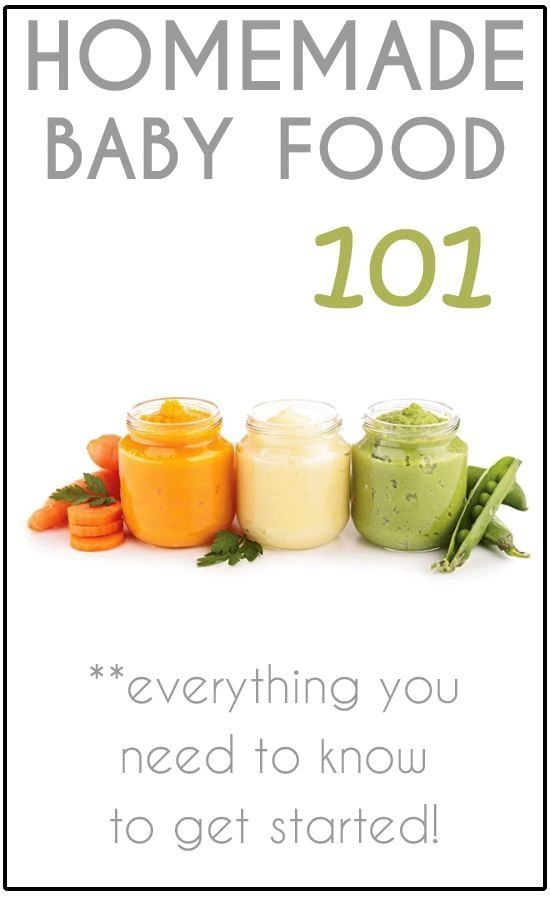 5-2 years old in sections DISHES FROM MILK, FERROUS DAIRY PRODUCTS AND EGGS; KEFIR COOKING; SALADS; porridge; DESSERT; BEVERAGES and other sections LARGE HOME COOKING
5-2 years old in sections DISHES FROM MILK, FERROUS DAIRY PRODUCTS AND EGGS; KEFIR COOKING; SALADS; porridge; DESSERT; BEVERAGES and other sections LARGE HOME COOKING 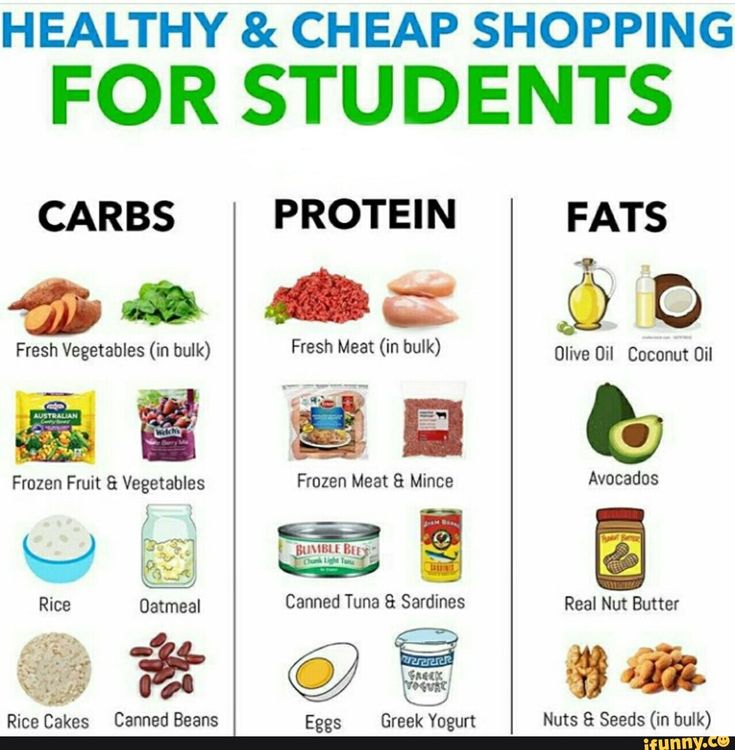
 Any canned food is not recommended. nine0729 — Cook your own food from raw ingredients purchased raw. Buy meat and fish only in pieces (but not minced meat products ).
Any canned food is not recommended. nine0729 — Cook your own food from raw ingredients purchased raw. Buy meat and fish only in pieces (but not minced meat products ). 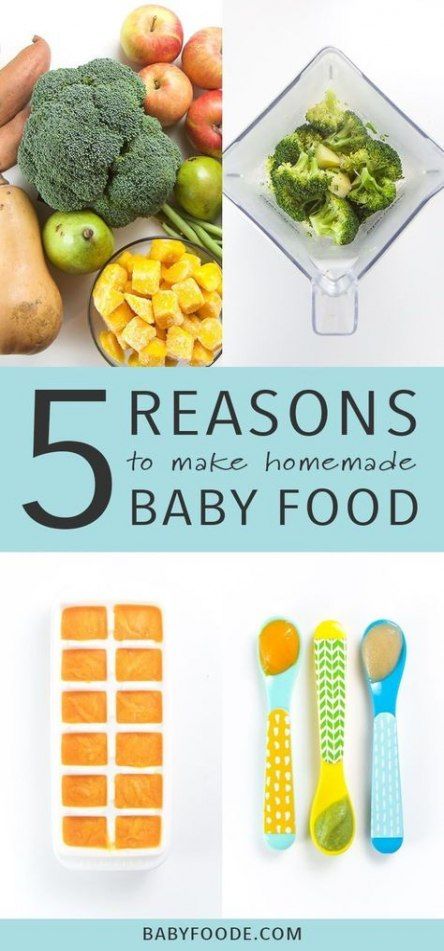 As the child grows older, his menu becomes more diverse, liquid and semi-liquid food is replaced by a denser one for the development of the chewing apparatus.
As the child grows older, his menu becomes more diverse, liquid and semi-liquid food is replaced by a denser one for the development of the chewing apparatus.  Cleaning should be done with a thin, sharp knife to reduce waste. To avoid the loss of minerals and vitamins, peeled vegetables are not recommended to be kept in water for a long time. In fresh white cabbage, spoiled and sluggish leaves are removed, the protruding part of the stalk is cut off. Cauliflower is cleaned of leaves, contaminated places are cleaned with a knife. Greens are sorted by hand. Cucumbers and tomatoes are washed and the stalk is removed. The zucchini is peeled, the seeds are removed from the bell pepper. Fruits and berries are washed, cleaned of the stalk, seed box and seeds, the stone is removed. nine0003
Cleaning should be done with a thin, sharp knife to reduce waste. To avoid the loss of minerals and vitamins, peeled vegetables are not recommended to be kept in water for a long time. In fresh white cabbage, spoiled and sluggish leaves are removed, the protruding part of the stalk is cut off. Cauliflower is cleaned of leaves, contaminated places are cleaned with a knife. Greens are sorted by hand. Cucumbers and tomatoes are washed and the stalk is removed. The zucchini is peeled, the seeds are removed from the bell pepper. Fruits and berries are washed, cleaned of the stalk, seed box and seeds, the stone is removed. nine0003 
 nine0003
nine0003  nine0003
nine0003 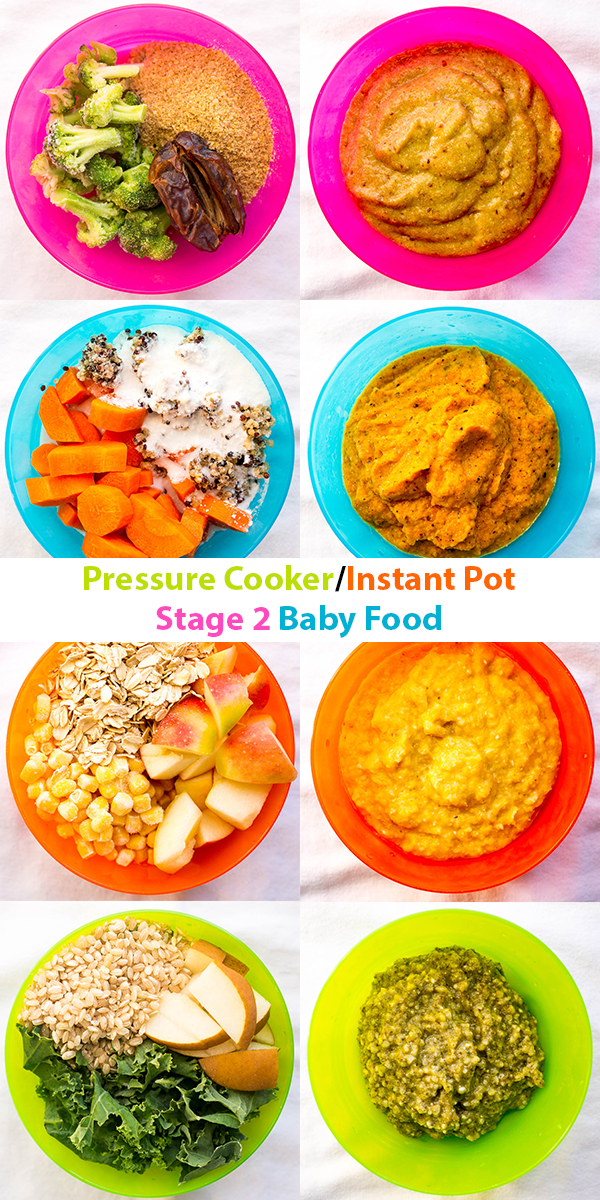 The basis can be broths from meat, fish, poultry, vegetables and roots.
The basis can be broths from meat, fish, poultry, vegetables and roots. 
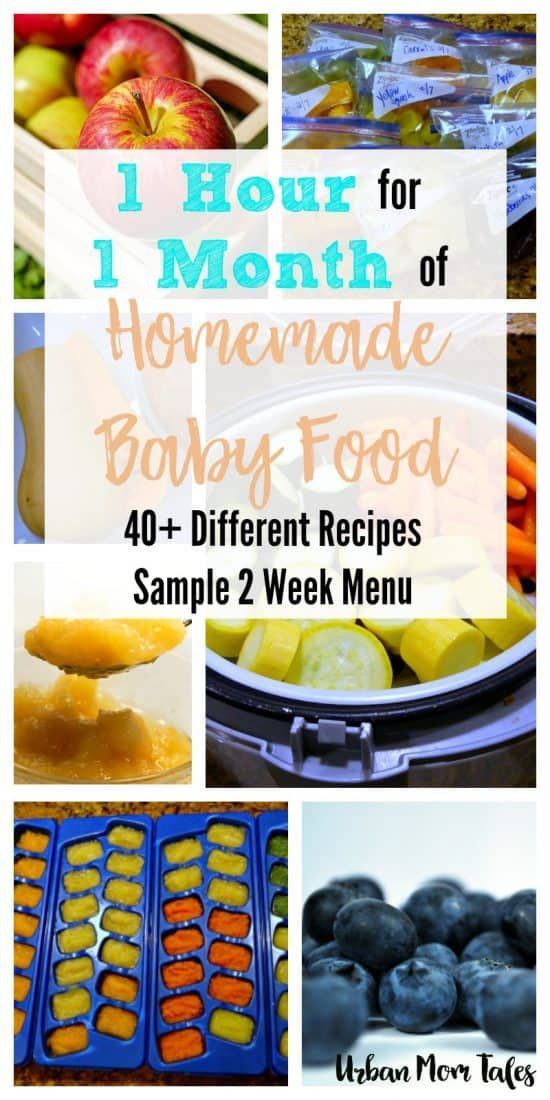 So you achieve several goals at the same time: feed the child, feed with vitamins (berries) and nutrients (porridge), cool quickly (berries melt in warm porridge very quickly, and porridge cools down quickly due to berries) and turn an ordinary meal into a small holiday.
So you achieve several goals at the same time: feed the child, feed with vitamins (berries) and nutrients (porridge), cool quickly (berries melt in warm porridge very quickly, and porridge cools down quickly due to berries) and turn an ordinary meal into a small holiday. 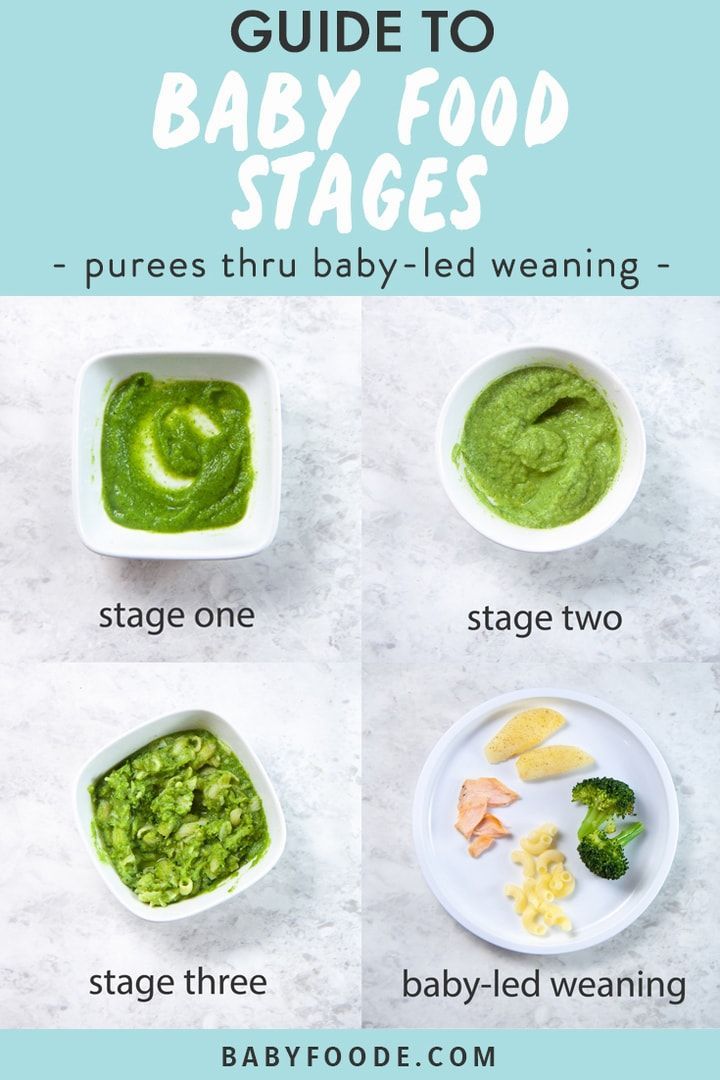 There is no sucrose in nature, it is found only in two plants artificially bred by people - in sugar cane and sugar beet. Consumption of sucrose in food is also one of the main causes of caries. If you get carried away with sugar, then you can expect metabolic disorders, which automatically leads to obesity. If a child has a hereditary predisposition to diabetes, frequent and excessive consumption of sugar can provoke this disease, because. First of all, the work of the pancreas is overloaded with sugar, which regulates this process. The acceptable norm of sugars for a child from 1 to 3 years old is 40-50 g per day. nine0003
There is no sucrose in nature, it is found only in two plants artificially bred by people - in sugar cane and sugar beet. Consumption of sucrose in food is also one of the main causes of caries. If you get carried away with sugar, then you can expect metabolic disorders, which automatically leads to obesity. If a child has a hereditary predisposition to diabetes, frequent and excessive consumption of sugar can provoke this disease, because. First of all, the work of the pancreas is overloaded with sugar, which regulates this process. The acceptable norm of sugars for a child from 1 to 3 years old is 40-50 g per day. nine0003 
 To avoid repeating the dishes and products given to the child in kindergarten, you need to know the menu of the kindergarten.
To avoid repeating the dishes and products given to the child in kindergarten, you need to know the menu of the kindergarten. 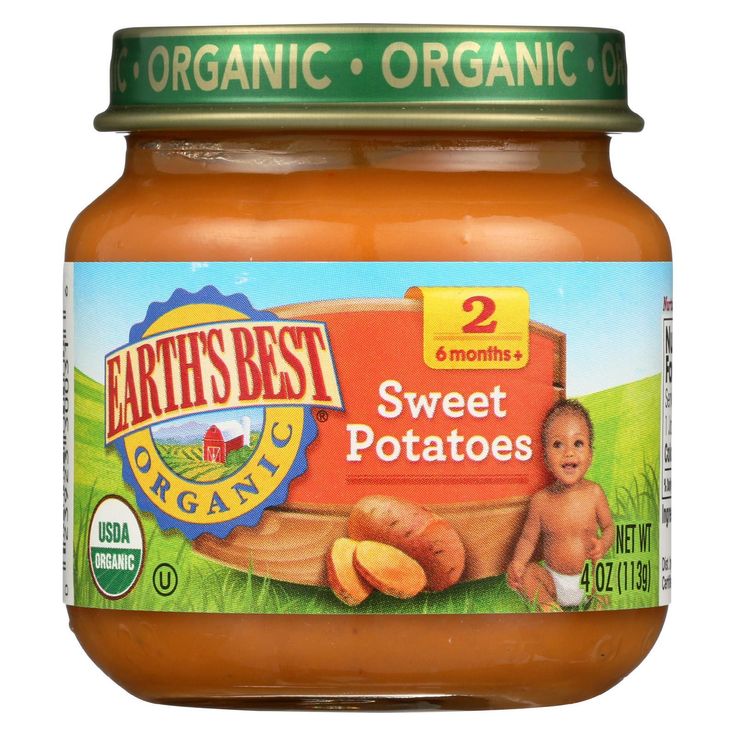 nine0003
nine0003  And 3-4 apples will help not only to have a good rest, but also to quickly learn new knowledge and not “lose” them the next day. Actively include cheese, fresh berries and cottage cheese in your diet. The child should receive the most enhanced nutrition during the exams. nine0003
And 3-4 apples will help not only to have a good rest, but also to quickly learn new knowledge and not “lose” them the next day. Actively include cheese, fresh berries and cottage cheese in your diet. The child should receive the most enhanced nutrition during the exams. nine0003 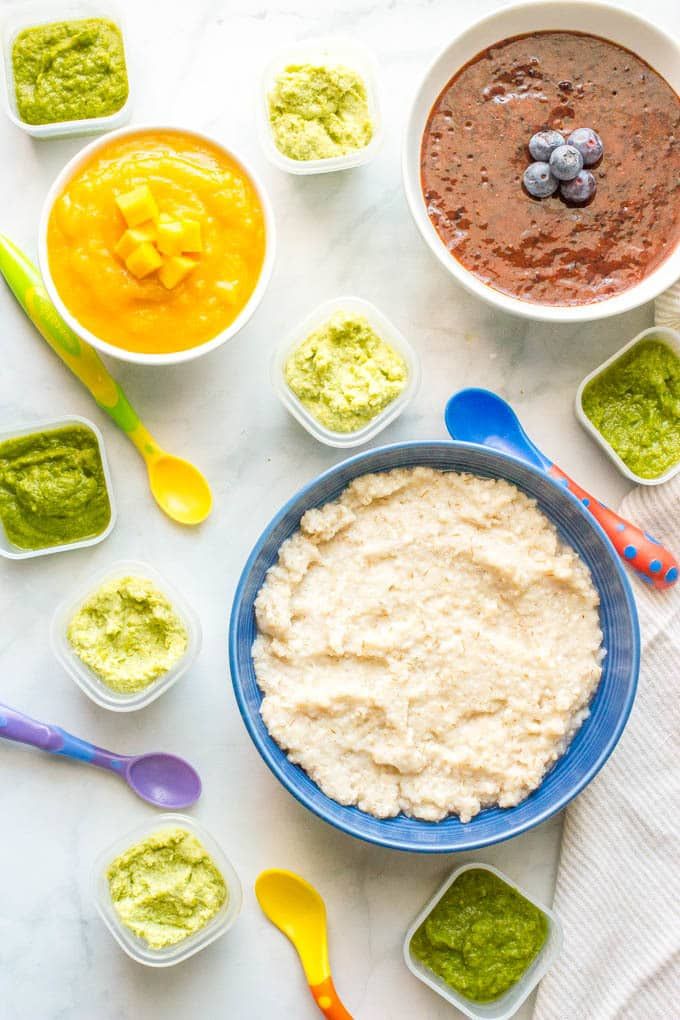 In the absence of sugars in the diet, after 2-2.5 weeks, a severe condition of hypoglycemia occurs . But among all sugars (these are mainly natural sugars FRUCTOSE and GLUCOSE), the use of SUCCAROSES is unacceptable. nine0813
In the absence of sugars in the diet, after 2-2.5 weeks, a severe condition of hypoglycemia occurs . But among all sugars (these are mainly natural sugars FRUCTOSE and GLUCOSE), the use of SUCCAROSES is unacceptable. nine0813  ) nine0003
) nine0003 

 Causes drowsiness in children.
Causes drowsiness in children. 

 ) was excellent. It was only in the 1950s that mass industrial production of sugar was established in the USSR, making it one of the cheapest foods available in daily meals the entire population, including the poorest. nine0003
) was excellent. It was only in the 1950s that mass industrial production of sugar was established in the USSR, making it one of the cheapest foods available in daily meals the entire population, including the poorest. nine0003  Unfortunately, this program, like many others, was only partially implemented - to feed the Soviet party elite and their families. nine0003
Unfortunately, this program, like many others, was only partially implemented - to feed the Soviet party elite and their families. nine0003 
 5 years old on the pages of many sections SuperCook.ru
5 years old on the pages of many sections SuperCook.ru 
